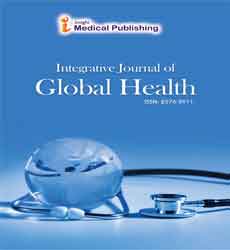ISSN : 2576-3911
Integrative Journal of Global Health
Effects of Bio-hazardous Chemicals on the Nature
Jong Lee*
Department of Biological Science, Hokkaido Institute of Public Health, Japan
- *Corresponding Author:
- Jong Lee, Department of Biological Science, Hokkaido Institute of Public Health, Japan, Email: .jl212121@vetmed.hokudai.ac.jp
Received Date: November 06, 2021; Accepted Date: November 20, 2021; Published Date: November 27, 2021
Citation: Lee J (2021) Effects of Bio- hazardous Chemicals on the Nature. Integr J Glob Health Vol.5 No.4. e001.
Editorial
Pediatrics a natural peril, often known as a biohazard, is a natural chemical that poses a threat to the health of living organisms, mostly humans. This could be a germ, an infection, or a chemical that has a negative impact on human health. A biohazard can also be a substance that is harmful to other animals.
The word and its associated image are typically used as a warning, so that anyone who may be exposed to the drugs is aware of the potential danger. Charles Baldwin, an ecological wellness engineer working for the Dow Chemical Company on the regulating items, produced the biohazard image in 1966. It's used to identify organic materials that pose a significant health risk, such as virus samples and used hypodermic needles.
The American National Standards Institute's indication marks, signs, and sections are relevant to bio-risky security issues (ANSI). Today, ANSI Z535 biohazards principles are used all over the world and they should always be used appropriately within ANSI Z535 Hazardous Communications (HazCom) signage, labelling, and sections. Through coloration and plan normalization, personnel will be able to immediately discern the seriousness of a biohazard from a good way.
Organic danger image plan
• When paired with a DANGER sign, name, or section, a red or white-hued foundation is used behind a dark biohazard image.
• When a black biohazard image is combined with a WARNING sign, name, or passage, an orange or white-shaded foundation is used behind it.
• When a black biohazard image is combined with a CAUTION sign, mark, or section, a yellow or white-shaded foundation is used behind it.
• When used in conjunction with a NOTICE sign, name, or passage, a green or white-shaded base is used behind a dark biohazard image.
Peril is a term used to describe a biohazard that will bring death. Cautioning is used to identify a biohazard that could result in death. Alert is used to detect a biohazard that is likely to cause injury but not death. A non-physical problem biohazard message is distinguished by the use of NOTICE (for example cleanliness, tidy up or general lab arrangements).
Wherever possible, OSHA mandates the use of legitimate ANSI HazCom in American workplaces. These concepts are also used by state and local legislators as codes and regulations within their own wards. The proper use of ANSI Z535 signs, names, and sections is incorporated into a large number of OSHA's HazCom standards and is designed to work with ISO pictures. For a complete description of how to use DANGER, WARNING, CAUTION, and NOTICE signs, names, or sections, consult ANSI Z535.
Bio risky specialists are characterized for Transportation by UN number:
• Classification A, UN 2814 - Influencing people: An irresistible substance in a structure capable of inflicting long-term disability or serious or fatal sickness in otherwise healthy people or creatures when exposed to it.
• UN 2900, Class A - Infectious material, influencing creatures (just): An irresistible substance that isn't in a structure that is typically suited for creating long-term incapacity or hazardous or deadly sickness in any case solid humans and creatures when exposure to them occurs.
• UN 3373, Class B Biological Material - Biological substance delivered for analytic or enlightening purposes.
therapeutic therapy, or biological research, including development and testing.
Open Access Journals
- Aquaculture & Veterinary Science
- Chemistry & Chemical Sciences
- Clinical Sciences
- Engineering
- General Science
- Genetics & Molecular Biology
- Health Care & Nursing
- Immunology & Microbiology
- Materials Science
- Mathematics & Physics
- Medical Sciences
- Neurology & Psychiatry
- Oncology & Cancer Science
- Pharmaceutical Sciences
